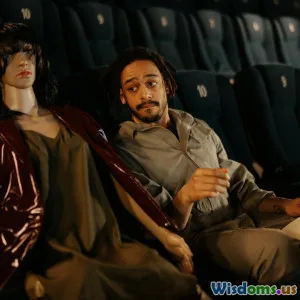
Cinematic Trends That Defined a Decade
6 min read Explore the cinematic trends that shaped film and entertainment over the past decade, highlighting innovations and shifts in audience engagement. (0 Reviews)
Cinematic Trends That Defined a Decade
The past decade has been a transformative period for the film industry, characterized by technological advancements, shifts in audience preferences, and an evolving cultural landscape. This article explores the key cinematic trends that have defined the last ten years, shedding light on how these developments have influenced filmmaking and the viewer experience.
The Streaming Revolution
One of the most significant trends of the last decade has been the rise of streaming platforms such as Netflix, Amazon Prime Video, and Disney+. This revolution has not only changed how audiences consume films but has also influenced the types of films being produced.
Accessibility and Variety
Streaming services have made films more accessible to a global audience, allowing viewers to explore diverse genres and international cinema that might not have reached theaters. This accessibility has led to a surge in demand for niche content, resulting in a wider variety of stories being told. For instance, films like "Roma" and "Parasite" have gained critical acclaim and commercial success, demonstrating that unconventional narratives can resonate with audiences.
Original Content and Competition
In response to the streaming boom, traditional studios have begun to invest heavily in original content. Companies like Disney have launched their own platforms, prioritizing exclusive releases to attract subscribers. Additionally, the competition has led to increased budgets for production and marketing, resulting in higher quality films that appeal to audiences worldwide.
The Superhero Dominance
Another defining trend of the past decade has been the meteoric rise of superhero films. The Marvel Cinematic Universe (MCU) has become a cultural phenomenon, reshaping the landscape of blockbuster filmmaking.
Franchise Building
The success of the MCU has set a precedent for franchise filmmaking, encouraging studios to develop interconnected universes. This trend has resulted in a string of successful superhero films and spin-offs, such as the DC Extended Universe and the emergence of independent comic-based films like "The Joker." The emphasis on franchise-building has changed how stories are developed, often prioritizing sequels and interconnected plots over standalone narratives.
Inclusion and Representation
While superhero films have dominated the box office, they have also been instrumental in promoting diversity and representation on screen. Films like "Black Panther" and "Wonder Woman" have not only achieved commercial success but have also sparked discussions about representation in the film industry, paving the way for more diverse storytelling.
The Rise of Authentic Storytelling
As audiences become more discerning, there has been a noticeable shift towards authentic storytelling. Filmmakers are increasingly focusing on personal narratives and real-life experiences, which resonate deeply with viewers.
Documentaries and Docuseries
The popularity of documentaries and docuseries has surged, with audiences drawn to real stories that reflect societal issues. Productions like "13th" and "Making a Murderer" have highlighted systemic injustices and sparked conversations about important topics, making documentary filmmaking a vital part of the cinematic landscape.
Personal Narratives
Independent films that center around personal narratives have gained traction, showcasing unique perspectives that challenge mainstream conventions. Projects like "Lady Bird" and "The Farewell" have found success and acclaim, proving that audiences crave authenticity and relatability in storytelling.
Technological Advancements
Technological innovations have also played a crucial role in shaping cinematic trends. The evolution of visual effects, virtual reality (VR), and augmented reality (AR) has expanded the possibilities for storytelling.
Visual Effects and Animation
Advancements in CGI and animation techniques have allowed filmmakers to create breathtaking visuals that enhance storytelling. Films like "Avatar" and "Spider-Man: Into the Spider-Verse" have pushed the boundaries of what is possible, captivating audiences with stunning imagery.
Interactive Experiences
The rise of VR and AR technologies has introduced new ways for audiences to engage with films. Interactive storytelling, as seen in projects like Netflix's "Black Mirror: Bandersnatch," allows viewers to influence narrative outcomes, creating a more immersive experience.
Conclusion
The last decade has been marked by significant cinematic trends that have reshaped the film industry. From the rise of streaming services and superhero dominance to the focus on authentic storytelling and technological advancements, these developments have transformed how films are made and consumed. As we move into the next decade, it will be exciting to see how these trends evolve and what new innovations will emerge, continuing to redefine the cinematic experience for audiences around the world.
Rate the Post
User Reviews
Popular Posts



















